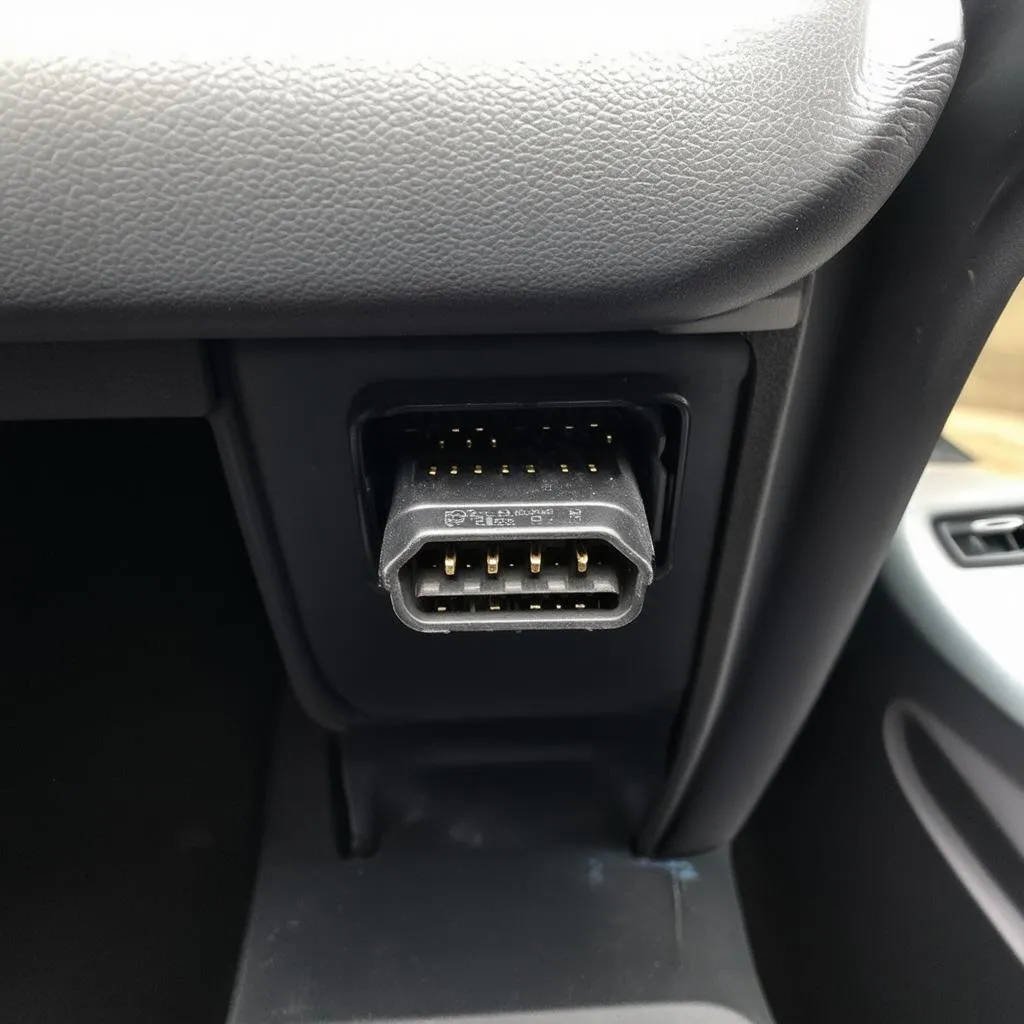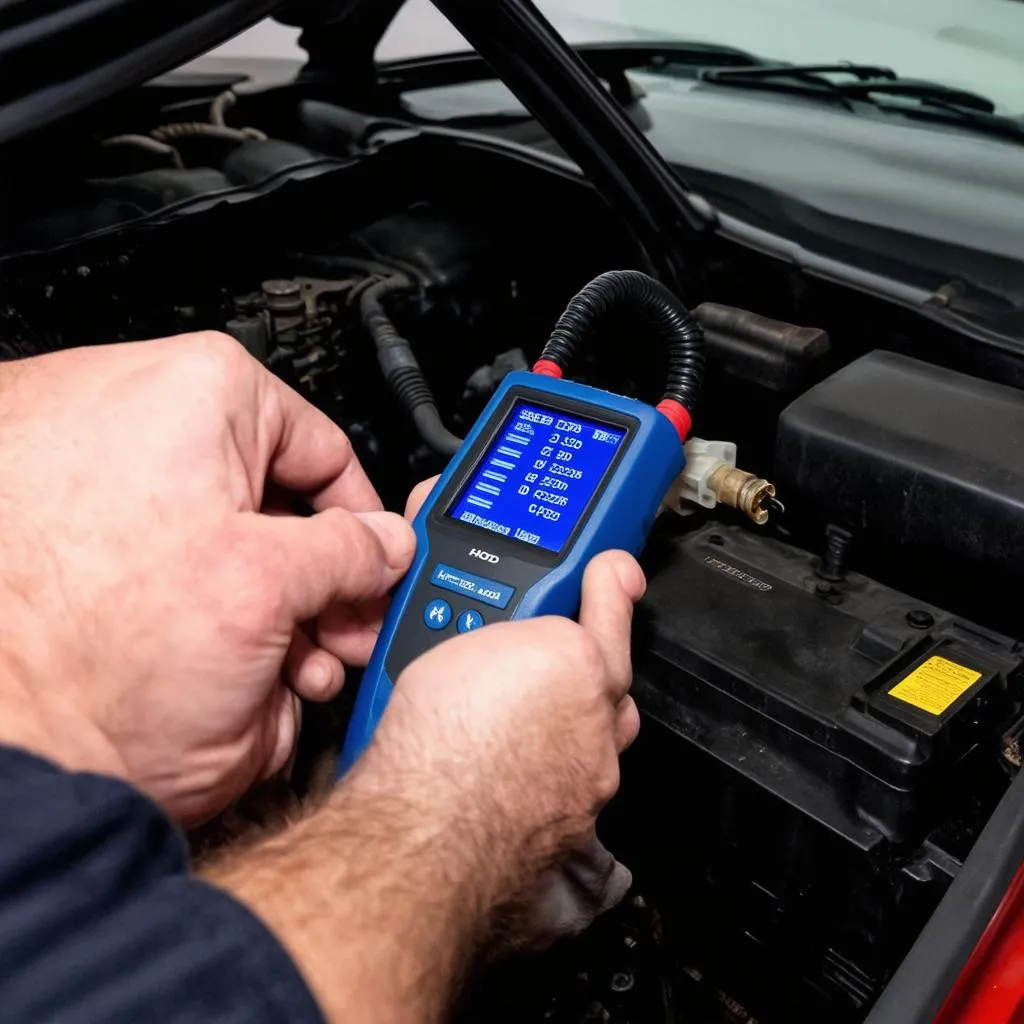Have you ever found yourself stranded on the side of the road, wondering where the OBD port is on your 2000 Honda CR-V? We’ve all been there. It can be a real pain when your car suddenly decides to act up and you need to hook it up to a diagnostic scanner to get it back on track.
Why You Need to Know the OBD Port Location
The OBD port, or On-Board Diagnostics port, is a crucial component of your car’s diagnostic system. It’s like a gateway to your car’s brain, allowing mechanics and even you (with the right tools) to access vital information about the vehicle’s performance.
Think of it like a doctor’s visit for your car. You wouldn’t expect a doctor to diagnose your illness without examining you, right? The same applies to your car. The OBD port allows your car’s doctor, the mechanic, to diagnose any issues and get you back on the road quickly and safely.
OBD Port Location for the 2000 Honda CR-V
The OBD port on a 2000 Honda CR-V is typically located underneath the dashboard, on the driver’s side.
How to Find the OBD Port
- Look beneath the dashboard: Locate the area below the steering wheel, near the driver’s side knee.
- Check for a 16-pin connector: The OBD port will have a rectangular shape with 16 pins arranged in a specific configuration.
Pro tip: Use a flashlight to illuminate the area under the dashboard. This will make it easier to find the port, especially in dark or dimly lit areas.
Common OBD Port Locations
While the 2000 Honda CR-V’s OBD port is usually located under the dashboard, it’s important to note that it can vary slightly depending on the model year and trim level. If you can’t find it under the dashboard, check these other common locations:
- Underneath the center console
- Near the fuse box
- In the engine compartment
Remember: If you’re still having trouble finding the OBD port, consult your owner’s manual for a specific location guide.
What to Do Once You Find the OBD Port
Once you’ve found the OBD port, you can connect a diagnostic scanner to get a better understanding of your car’s health.
Using a Diagnostic Scanner
A diagnostic scanner is a device that connects to the OBD port and can read and interpret various diagnostic codes stored in the car’s computer. This information can help you identify potential problems and troubleshoot them.
Common OBD Codes
There are a wide variety of OBD codes, each representing a different issue. Some common OBD codes include:
- P0171: System too lean (bank 1)
- P0300: Random/multiple cylinder misfire detected
- P0420: Catalyst system efficiency below threshold (bank 1)
Pro tip: Use an online OBD code lookup tool to decode the codes and get a better understanding of what they mean.
How to Find OBD Port Location Online
If you’re having trouble finding the OBD port location on your 2000 Honda CR-V, you can also use online resources to help you find it.
Online Resources
There are several online forums and websites dedicated to car maintenance and repair. You can search for “2000 Honda CR-V OBD port location” to find specific information from other car owners and mechanics.
Pro tip: Use a specific search query that includes the year, make, and model of your car for the most accurate results.
Getting Help from a Mechanic
If you’re still having trouble finding the OBD port or interpreting the diagnostic codes, don’t hesitate to contact a qualified mechanic for help. They have the expertise and tools to diagnose and repair any issues with your car’s electrical system.
Safety Tips
When working with the OBD port, it’s important to take safety precautions:
- Disconnect the battery before working on any electrical components.
- Use insulated tools to avoid electrical shock.
- Avoid exposing the OBD port to water or other liquids.
Feng Shui and Car Maintenance
While some people believe that Feng Shui can influence the health of a car, it’s important to remember that it’s not a substitute for proper car maintenance. Regularly checking your car’s fluids, tires, and other components is essential for keeping your car running smoothly.
Is it True That Car Owners Should Never Use a OBD Port?
No, this is a myth! Using the OBD port is crucial for diagnosing and maintaining your car. It’s not something to be feared, but rather a valuable tool that can help keep your car running smoothly.
Want to Learn More?
Are you interested in learning more about OBD ports and car diagnostics? Check out these related articles on TechCarUSA:
- 2007 Honda Accord OBD Port Location
- Complete List of OBD Codes
- 2000 Honda CR-V OBD Connector Location
- 2002 Honda CR-V OBD Port Location
- 2000 Honda CR-V OBD Port Location
Need Help with Car Diagnostics?
If you’re struggling to find the OBD port or interpret diagnostic codes, we can help! Contact us at [Whatsapp: +84767531508] to connect with our team of expert mechanics, available 24/7.
Don’t let car trouble get you down!
We’re here to help you get back on the road quickly and safely. Leave a comment below if you have any questions or share your own OBD port location tips. And be sure to check out more helpful car maintenance tips on TechCarUSA!
 obd-port-location-honda-crv
obd-port-location-honda-crv
 obd-scanner-diagnostic-tool
obd-scanner-diagnostic-tool
 honda-crv-car-maintenance
honda-crv-car-maintenance